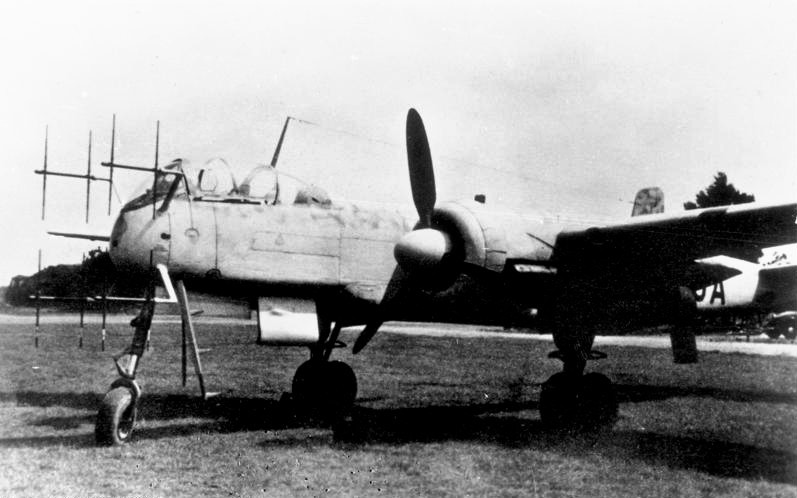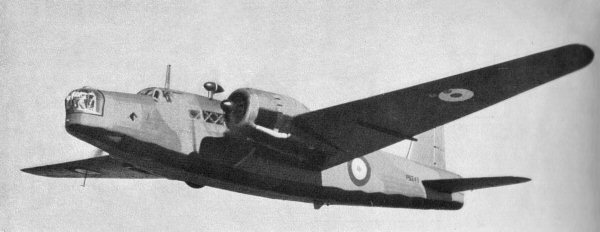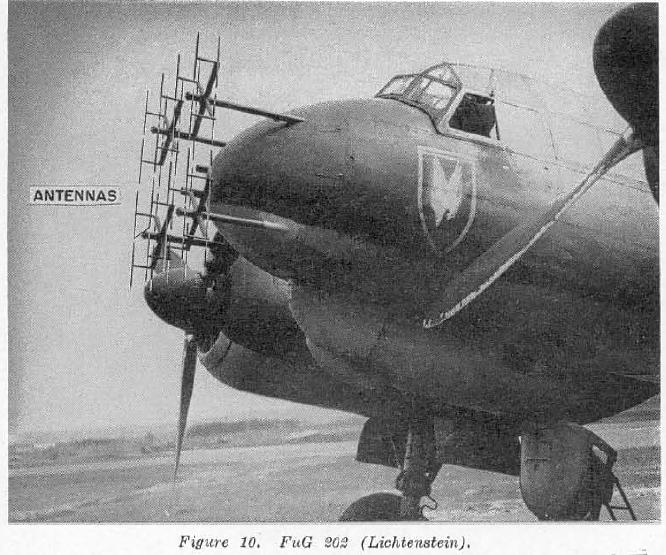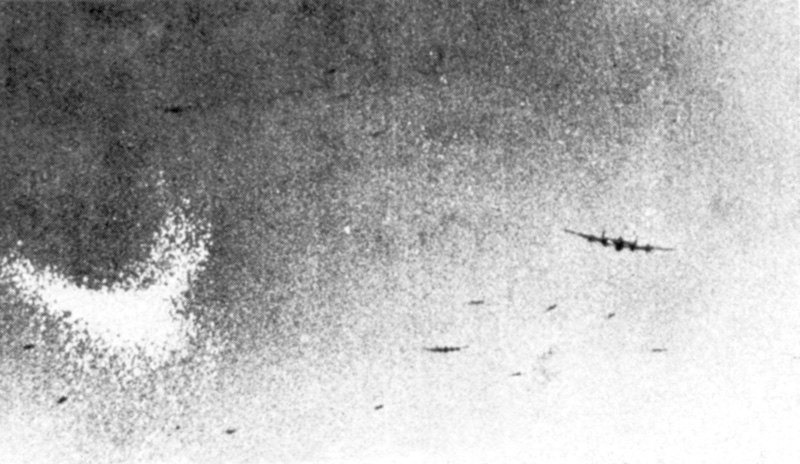|
Werner Baake
Werner Baake (1 November 1918 in Nordhausen, Germany – 15 July 1964) was a night fighter pilot fighter ace and recipient of the Knight's Cross of the Iron Cross who served in the Nazi German ''Luftwaffe'' during World War II. The Knight's Cross of the Iron Cross was awarded to recognize extreme battlefield bravery or successful military leadership. Baake claimed 41 nocturnal aerial victories in 195 combat missions. He was the 36th most successful night fighter ace of World War II, and of aerial warfare. Baake's total surpassed that of all Allied night fighter pilots; Branse Burbridge being the highest. Career Baake was born on 1 November 1918 in Nordhausen, at the time in Thuringia of the German Empire. Following flight training, Baake was posted to I. '' Gruppe'' of ''Nachtjagdgeschwader'' 1 (NJG 1), based at Gilze-Rijen, Netherlands on 21 November 1942. The unit was involved in so-called ''Reichsverteidigung'' ("Defence of the Reich") operations. Night fighter career ... [...More Info...] [...Related Items...] OR: [Wikipedia] [Google] [Baidu] |
Nordhausen, Thuringia
Nordhausen () is a city in Thuringia, Germany. It is the capital of the Nordhausen district and the urban centre of northern Thuringia and the southern Harz region; its population is 42,000. Nordhausen is located approximately north of Erfurt, west of Halle, south of Braunschweig and east of Göttingen. Nordhausen was first mentioned in records in the year 927 and became one of the most important cities in central Germany during the later Middle Ages. The city is situated on the Zorge river, a tributary of the Helme within the fertile region of Goldene Aue ''(golden floodplain)'' at the southern edge of the Harz mountains. In the early 13th century, it became a free imperial city, so that it was an independent and republican self-ruled member of the Holy Roman Empire. Due to its long-distance trade, Nordhausen was prosperous and influential, with a population of 8,000 around 1500. It was the third-largest city in Thuringia after Erfurt, today's capital, and Mühlhausen, the ... [...More Info...] [...Related Items...] OR: [Wikipedia] [Google] [Baidu] |
Netherlands
) , anthem = ( en, "William of Nassau") , image_map = , map_caption = , subdivision_type = Sovereign state , subdivision_name = Kingdom of the Netherlands , established_title = Before independence , established_date = Spanish Netherlands , established_title2 = Act of Abjuration , established_date2 = 26 July 1581 , established_title3 = Peace of Münster , established_date3 = 30 January 1648 , established_title4 = Kingdom established , established_date4 = 16 March 1815 , established_title5 = Liberation Day (Netherlands), Liberation Day , established_date5 = 5 May 1945 , established_title6 = Charter for the Kingdom of the Netherlands, Kingdom Charter , established_date6 = 15 December 1954 , established_title7 = Dissolution of the Netherlands Antilles, Caribbean reorganisation , established_date7 = 10 October 2010 , official_languages = Dutch language, Dutch , languages_type = Regional languages , languages_sub = yes , languages = , languages2_type = Reco ... [...More Info...] [...Related Items...] OR: [Wikipedia] [Google] [Baidu] |
Battle Of The Ruhr
The Battle of the Ruhr (5 March – 31 July 1943) was a strategic bombing campaign against the Ruhr Area in Nazi Germany carried out by RAF Bomber Command during the Second World War. The Ruhr was the main centre of German heavy industry with coke plants, steelworks, armaments factories and ten synthetic oil plants. The British attacked 26 targets identified in the Combined Bomber Offensive. Targets included the Krupp armament works (Essen), the Nordstern synthetic oil plant at Gelsenkirchen and the Rheinmetal–Borsig plant in Düsseldorf, which was evacuated during the battle. The battle included cities such as Cologne not in the Ruhr proper but which were in the larger Rhine-Ruhr region and considered part of the Ruhr industrial complex. Some targets were not sites of heavy industry but part of the production and movement of materiel. The Ruhr had been attacked by Bomber Command from 1940, its defences and the amounts of industrial pollutants produced a semi-permanent smog ... [...More Info...] [...Related Items...] OR: [Wikipedia] [Google] [Baidu] |
Leutnant
() is the lowest Junior officer rank in the armed forces the German (language), German-speaking of Germany (Bundeswehr), Austrian Armed Forces, and military of Switzerland. History The German noun (with the meaning "" (in English "deputy") from Middle High German «locum tenens» (in English "place holder") was derived from the French word about 1500. In most German-speaking armies it is the lowest officer rank (in German-speaking navies (English "Lieutenant at sea")). In the German Bundeswehr the ranks and belong to the rank group. In some other armed forces (such as the former National People's Army) there is the lower grade of Unterleutnant. From about 1500 until the middle of the 17th century the designation of was commonly used for any deputy to a commanding officer. So at the army level there was the appointment of (English "lieutenant-general"), at the regimental level there was that of (English "lieutenant-colonel"), and at the company level the was deputy to ... [...More Info...] [...Related Items...] OR: [Wikipedia] [Google] [Baidu] |
Lichtenstein Radar
The Lichtenstein radar was among the earliest airborne radars available to the Luftwaffe in World War II and the first one used exclusively for air interception. Developed by Telefunken, it was available in at least four major revisions, called FuG 202 Lichtenstein B/C, FuG 212 Lichtenstein C-1, FuG 220 Lichtenstein SN-2 and the very rarely used FuG 228 Lichtenstein SN-3. (FuG is short for ''Funk-Gerät'', radio set). The Lichtenstein series remained the only widely deployed airborne interception radar used by the Germans on their night fighters during the war — the competing FuG 216 through 218 ''Neptun'' mid- VHF band radar systems were meant as a potentially more versatile stop-gap system through 1944, until the microwave-based FuG 240 "Berlin" could be mass-produced; the ''Berlin'' system was still being tested when the war ended. FuG 202 Lichtenstein B/C Early FuG 202 Lichtenstein B/C units were not deployed until 1942. They operated at a maximum RF output power o ... [...More Info...] [...Related Items...] OR: [Wikipedia] [Google] [Baidu] |
Searchlight
A searchlight (or spotlight) is an apparatus that combines an extremely bright source (traditionally a carbon arc lamp) with a mirrored parabolic reflector to project a powerful beam of light of approximately parallel rays in a particular direction. It is usually constructed so that it can be swiveled about. Military use The first use of searchlights using carbon arc technology occurred during the Siege of Paris during the Franco-Prussian War. The Royal Navy used searchlights in 1882 to dazzle and prevent Egyptian forces from manning artillery batteries at Alexandria. Later that same year, the French and British forces landed troops under searchlights. By 1907 the value of searchlights had become widely recognized. One recent use was to assist attacks by torpedo boats by dazzling gun crews on the ships being attacked. Other uses included detecting enemy ships at greater distances, as signaling devices, and to assist landing parties. Searchlights were also used by battles ... [...More Info...] [...Related Items...] OR: [Wikipedia] [Google] [Baidu] |
Radar
Radar is a detection system that uses radio waves to determine the distance (''ranging''), angle, and radial velocity of objects relative to the site. It can be used to detect aircraft, ships, spacecraft, guided missiles, motor vehicles, weather formations, and terrain. A radar system consists of a transmitter producing electromagnetic waves in the radio or microwaves domain, a transmitting antenna, a receiving antenna (often the same antenna is used for transmitting and receiving) and a receiver and processor to determine properties of the objects. Radio waves (pulsed or continuous) from the transmitter reflect off the objects and return to the receiver, giving information about the objects' locations and speeds. Radar was developed secretly for military use by several countries in the period before and during World War II. A key development was the cavity magnetron in the United Kingdom, which allowed the creation of relatively small systems with sub-meter resolution. Th ... [...More Info...] [...Related Items...] OR: [Wikipedia] [Google] [Baidu] |
Kammhuber Line
The Kammhuber Line was the Allied name given to the German night air defense system established in July 1940 by Colonel Josef Kammhuber. It consisted of a series of control sectors equipped with radars and searchlights and an associated night fighter. Each sector would direct the night fighter into visual range with target bombers. The Line was very effective against early Bomber Command tactics. However, the German method was analyzed by the RAF and a counter measure developed. On the night of 30/31 May 1942 in its 1,000 plane raid against Cologne, Bomber Command introduced the use of the bomber stream. The concentration of bombers through a few of the boxes resulted in the defenses being overwhelmed. In response, the Germans converted their ground radar into a radar network, which would follow the path of the British bombers, while a controller directed the night fighters into the stream. Measure and counter measure continued until October 1944, when German defenses were no lo ... [...More Info...] [...Related Items...] OR: [Wikipedia] [Google] [Baidu] |
Air Defense
Anti-aircraft warfare, counter-air or air defence forces is the battlespace response to aerial warfare, defined by NATO as "all measures designed to nullify or reduce the effectiveness of hostile air action".AAP-6 It includes surface based, subsurface ( submarine launched), and air-based weapon systems, associated sensor systems, command and control arrangements, and passive measures (e.g. barrage balloons). It may be used to protect naval, ground, and air forces in any location. However, for most countries, the main effort has tended to be homeland defence. NATO refers to airborne air defence as counter-air and naval air defence as anti-aircraft warfare. Missile defence is an extension of air defence, as are initiatives to adapt air defence to the task of intercepting any projectile in flight. In some countries, such as Britain and Germany during the Second World War, the Soviet Union, and modern NATO and the United States, ground-based air defence and air defence aircraf ... [...More Info...] [...Related Items...] OR: [Wikipedia] [Google] [Baidu] |
Josef Kammhuber
Josef Kammhuber (August 19, 1896 – January 25, 1986) was a career officer in the Luftwaffe and post-World War II German Air Force. During World War II, he was the first general of night fighters in the Luftwaffe. Kammhuber created the night fighter defense system, the so-called Kammhuber Line, but the detailed knowledge of the system provided to the Royal Air Force by British military intelligence allowed them to render it ineffective. Personal battles between him and Erhard Milch, director of the Reich Air Ministry, led to his dismissal in 1943. After the war, he joined the Bundeswehr, the armed forces of West Germany. Career Josef Kammhuber was born in Tüßling, Bavaria, the son of a farmer. At the outbreak of World War I Kammhuber was 18 and joined a Bavarian engineer battalion. He participated in the Battle of Verdun in 1916 and was promoted to Second Lieutenant in 1917. He remained in Germany's post-war army, and in 1925 was promoted to First Lieutenant. Between Octobe ... [...More Info...] [...Related Items...] OR: [Wikipedia] [Google] [Baidu] |
Generalmajor
is the Germanic variant of major general, used in a number of Central and Northern European countries. Austria Belgium Denmark is the second lowest general officer rank in the Royal Danish Army and Royal Danish Air Force. As a two-star rank it is the equivalent to the rank of counter admiral in the Royal Danish Navy. The rank is rated OF-7 within NATO. It has the grade of M404 within the Ministry of Defence's pay structure. The rank of major general is reserved for the Chief of the army and air force. History On 25 May 1671, the ranks were codified, by King Christian V, with the publication of the Danish order of precedence. Here generals of the branch were placed below Lieutenant field marshal ( da, Feltmarskal Lieutenant), and above the noble rank of Count and the military rank of Lieutenant general. As part of the Army Reform of 1867, the ranks of Major, Lieutenant colonel were removed and only a single "General" rank was kept. After the 1880 reform, the gene ... [...More Info...] [...Related Items...] OR: [Wikipedia] [Google] [Baidu] |
Royal Air Force
The Royal Air Force (RAF) is the United Kingdom's air and space force. It was formed towards the end of the First World War on 1 April 1918, becoming the first independent air force in the world, by regrouping the Royal Flying Corps (RFC) and the Royal Naval Air Service (RNAS). Following the Allied victory over the Central Powers in 1918, the RAF emerged as the largest air force in the world at the time. Since its formation, the RAF has taken a significant role in British military history. In particular, it played a large part in the Second World War where it fought its most famous campaign, the Battle of Britain. The RAF's mission is to support the objectives of the British Ministry of Defence (MOD), which are to "provide the capabilities needed to ensure the security and defence of the United Kingdom and overseas territories, including against terrorism; to support the Government's foreign policy objectives particularly in promoting international peace and security". The R ... [...More Info...] [...Related Items...] OR: [Wikipedia] [Google] [Baidu] |







